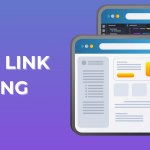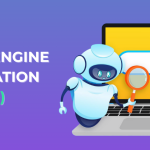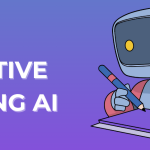Table Of Content
The age of Google AI Overview has dawned upon us. It has brought forth a deluge of new technology. As a result, many experts are questioning archaic methods used by digital marketing entities. One such method is backlinking.
Creating backlinks is a great means to stay relevant in a highly competitive world. But the question now is regarding its relevance in 2025. Is it relevant? Will it yield results? Will it be replaced in the coming years?
In this article, we will address these questions and determine whether backlinking is still relevant. So you can also understand how Backlinking has evolved into what it is today. And how you can use it to curate and create content.

Source: Editorial Link, Meetanshi
Is Backlinking Dead?
One of the biggest and most relevant questions that people ask is, ‘Is Backlinking Dead?’ Honestly speaking, no, and it will never be. Backlinking is one of the most result-yielding digital marketing tools. A detailed analysis by an industry insider, Patrick Stox, analyzed 1,000,000 keywords and revealed some insight:
- Correlation of local queries: 0.33
- Number of followed backlinks: 0.242
- Number of referring domains: 0.255
These numbers might not mean much to an outsider, but it does show that backlinks are still relevant and can produce results. In fact, a 2024 Google leak provided the right insight into the entire thing.
The document suggested that insiders and experts might have opinions on backlinks, yet Google continues to use them as one of its leading ranking metrics. This is why backlinks are not irrelevant or could never be.

Source: Editorial Link
Correlation Between AI Overview & Backlink

One of the most relevant pieces of compelling evidence comes from the AI overview itself. Detailed research from names such as DemandSphere and Botify found that most pages cited by Google AI overview rank in the top. This creates a feedback loop.
Another study by Ahrefs suggests that close to 75,000 brands have confirmed their relationship with AI, and that sites with high domain authority. In other words, websites with high DA are often preferred over websites with poor DA.
How Is AI Changing The Game?
AI is not just a jargon. It is a real landslide when it comes to digital intervention. AI is not just helping out businesses to generate content. But it is also helping digital marketing businesses to rank higher in the metrics.
Therefore, understanding how AI is changing the landscape and its true effects is very important. Here is a deep dive into how AI is changing the game itself. Hence, follow along to know more.
#1 Page Rank to AI Algorithms
Google initially relied on the PageRank algorithm. The algorithm was simple: pages with the highest domain authority and complementary metrics will rank higher. Sergey Brin and Larry Page initially created this ranking array. However, it has changed how rankings work.
On paper, AI does not care much about the website metrics; it cares more about the content. Now, it would be wrong to assume that PageRank is obsolete. In fact, the new ranking array does derive its basics from the traditional AI ranking metrics, but with added sophistication:
- Contextual understanding goes deeper than keyword matching. It understands the context anf then lists articles that not only match the keyword but also the context.
- AI is far better at identifying manipulative link patterns. It chooses organic links and filters out AI-generated and low-quality links.
- AI understands the link and reads its entity to grasp the broader context. This increases topocal authority and makes the result more accurate.
#2 Quality & Relevance Above Everything Else
The era of Google AI Overview has rapidly brought about changes that have pushed the landscape to prioritise quality and relevance. Backlinks are not chosen at random. AI pushes for deeper checks, like:
- Source Authority: Domain authority of a website determines the weight of the result, but it does not put blind faith in it. It does analyze and assess the entire thing for better results.
- Topical relevance: Links must always come from contextually relevant websites. If a person is looking for diet tips, Google would automatically prioritise links from established medical websites over those from lifestyle websites.
- Link Placement: AI looks at how well a link is positioned. It sometimes even examines if the link is a one-off placement fluke or if the content is actually helpful. Therefore, separating promotional content from useful content.
What Role Is Backlinking Playing In AI Search Features?
Backlinking has gone through revisions. However, it remains relevant and plays a major role in how search engines work. It plays a major role as the modern-day backbone of SEO. Here are some ways backlinking is evolving.
Google AI Overview
Google AI overview has brought forth one of the most significant changes in recent history. It represents new-age changes that have streamlined how content is listed and how search engines find it.
AI Overview takes snippets from multiple sources to create a comprehensive piece of content. AI overview achieves this with the help of specialized and multifaceted inclusion of several key metrics, such as:
- Organic ranking dependency, which highlights the top 12 articles. This shows the importance of having a strong backlink profile.
- Authority signals that allow profiles with robust backlinks taken from trustworthy sources for AI synthesis.
- Backlinks and AI crawlers make content discovery easier and more context, and not the other way around.
GPT & LLM
A recent study by Seer Interactive highlighted some key metrics. All of these metrics show that ChatGPT and other LLM models also prioritize backlinks for AI overview: The data suggest that there is a strong correlation between Google first-page ranking anf GPT mentions.
Building Backlinks To Support AI Overview
Backlinks might be a part of the traditional SEO strategies. However, they are still an integral part of search engines. The AI overview has clearly shown a strong affinity to prioritise content and websites with good backlink structure.
Now the question is: What makes a good backlink structure? Here are some of the leading means of creating a well-structured backlink portfolio:
- Keep The Links Within The Topic Area: Do not stray too far from your niche. That can backfire and yield no positive results.
- Add Meaning To The Anchor: The Anchor must not be just a promotional hook linking to a client’s website. It must carry a meaning and value, or have a connection with the content.
- Build A Balance: Do not rely on a single source to create a backlink portfolio. Mix and match to make things more diverse.
Creating a detailed, robust content portfolio is not a linear process. Especially if you are building a content website, it can be a difficult task that requires careful planning. Hopefully, our content did that and showed you why backlinks are still relevant.








